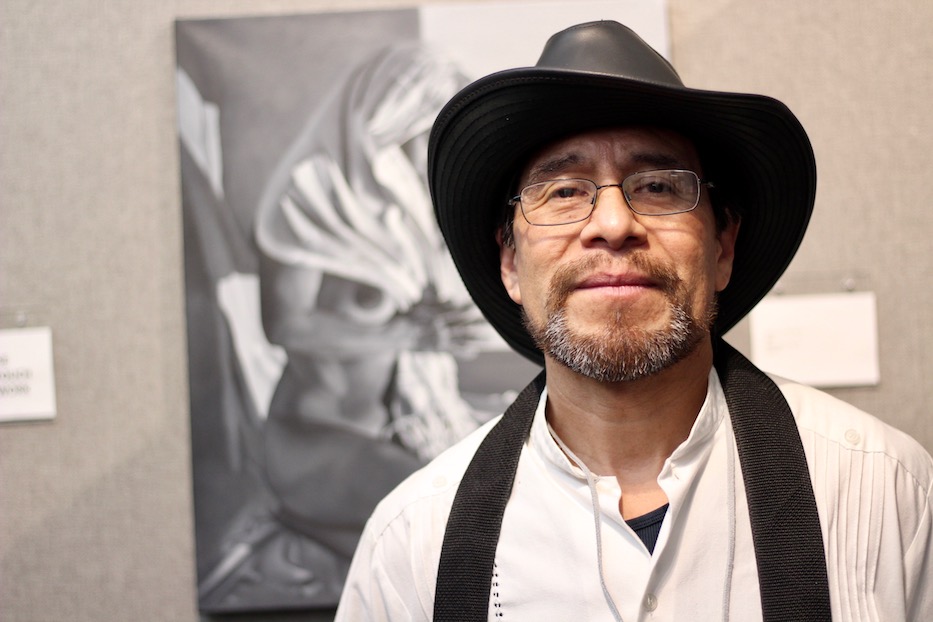
Immigration | Arts & Culture | Youth Arts Journalism Initiative | Arts & Anti-racism | Welcome Home
.jpg?width=933&name=MiguelNHFPL%20-%201%20(1).jpg)
Mendoza at the New Haven Free Public Library in January 2020. Lucy Gellman File Photo.
Miguel Angel Mendoza intently mapped out a painting, reaching into his roots for inspiration. On the canvas, a black and white scene emerged. A man and woman danced with their eyes shut. Their bodies were in motion. As they moved, they created a door to Mendoza’s native Mexico.
Many things have changed for Mendoza since he first moved to the United States from Oaxaca, Mexico several decades ago. The journey is anything but black and white.
If Mendoza were to paint it, he would need the colors of his dreams—both those abandoned and those reborn. He would add the pain of losing a family, the bittersweet joy and exhaustion of building a new home and a life in this country.
Those are all part of the subtext of Mendoza’s story as a father, artist and essential worker. When he’s not creating and promoting his artwork or spending time with his family, Mendoza works 50 hour weeks in a pub in Old Saybrook. He is also a musician, visual artist, and art student at Paier College. 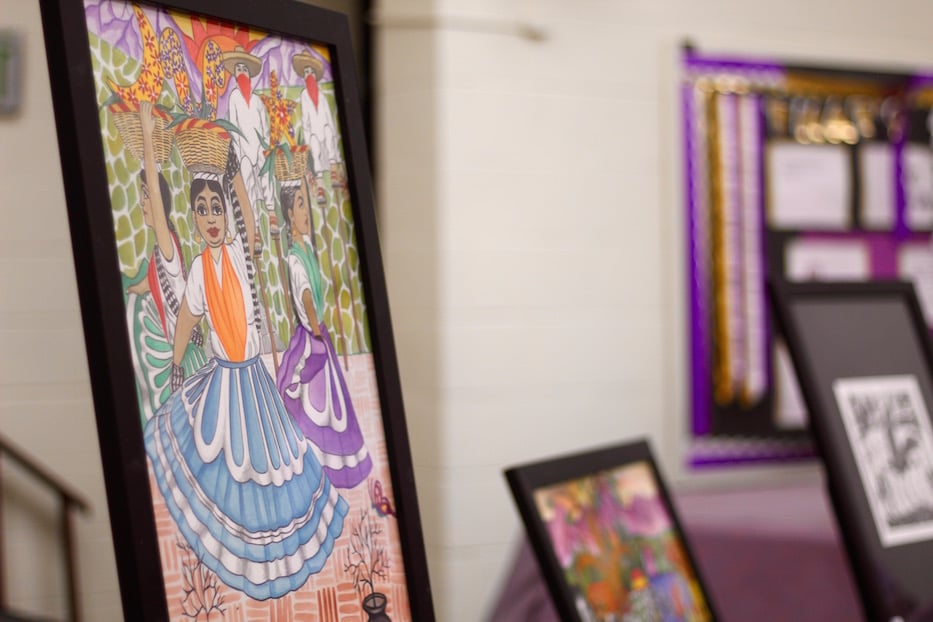
Mendoza's work on view at a Music Haven concert in late 2021. Lucy Gellman File Photo.
"I have lived in this country for a very long time but I am not viewed the same way other people are because I don’t have the same documents they do,” he said in a recent interview. “If you pay taxes, you are a part of the community. But for me, I still don’t receive the same support other members of the community do.”
“We have applied to different organizations looking for scholarships but haven’t received any,” said his wife, Luisa Mendoza.
So far, he has only qualified for Covid-19 relief through the Greater New Haven Relief Fund. He worries about paying for school, which comes with a $6,000 price tag each semester, on top of bills and food.
Still, he said, he hasn’t forgotten the people and artists that have put faith in him. In times of need, he knows who to turn to and receive support from.
“When I am alone and need help, I ask God,” Mendoza said. “By believing, being honest, and not doing anything wrong I can be sure help will come. I am living proof. This time around, I have faith it will happen again.”
Leaving Mexico
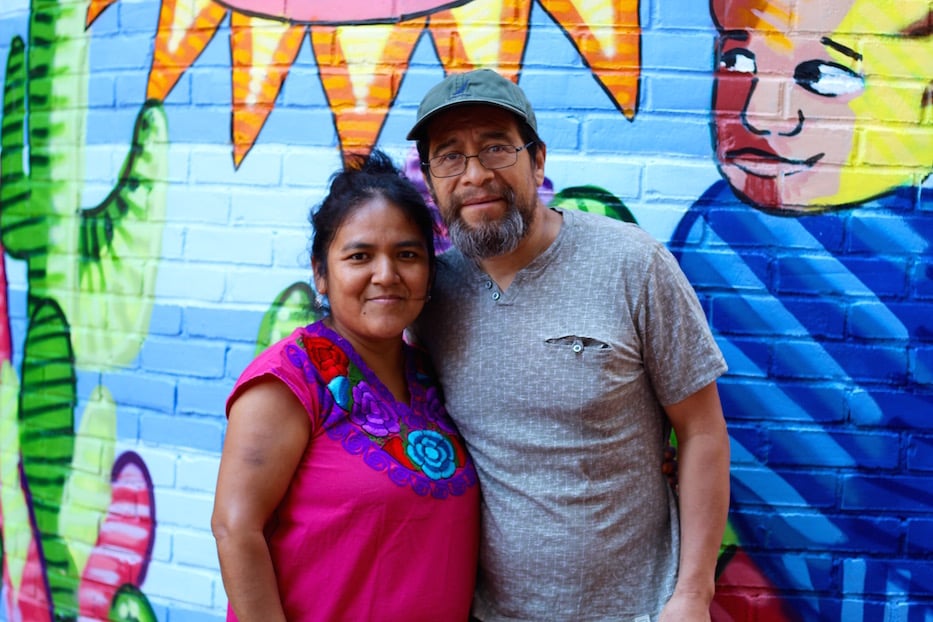
Luisa and Miguel Angel Mendoza in Pitkin Plaza. Lucy Gellman File Photo.
Mendoza first came to the U.S. in 1988 to support his family. He was 21. He had planned to teach elementary school math but Villa de Zaachila, the town where he was living with his parents, had other plans. He chose survival.
"One day my mother said, 'You have to work now,’” Mendoza recalled. “My family ran out of money, the wait was too long to be a teacher, and I had no other job experience.”
He landed first in Bridgeport, Conn. It was difficult: Mendoza said he experienced the culture shock of American food, education and racism. Back then, he did not speak English. In the grocery store or shopping for clothes, he was treated differently than other customers.
“There was a time when I asked someone for help in Spanish, and they pretended they didn’t understand me,” Mendoza said. “They turned around and spoke Spanish to their friends, ignoring me.”
Struggling in America
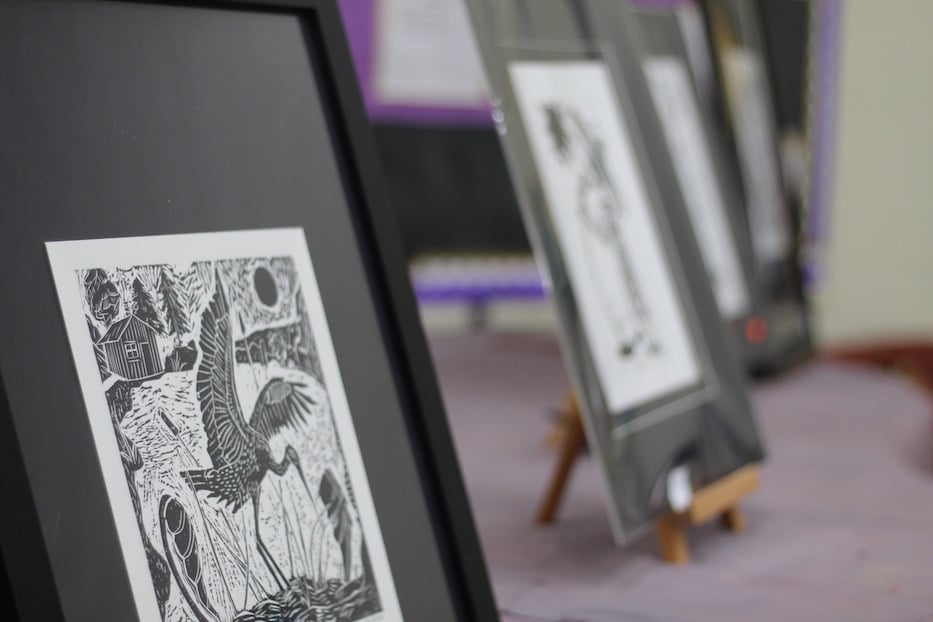
Mendoza's work on view at a Music Haven concert in late 2021. Lucy Gellman File Photo.
Within his first years in America, Mendoza began to carve out a life. He married and had a son. But three months after his son’s birth, Mendoza’s wife moved back to Mexico, taking their child with her. The two eventually divorced, but not before Mendoza moved back to Mexico in hopes of keeping the family together, and the two had a second son.
“We tried to stay together but everything was different,” he said. “I didn’t want to leave, but it wasn’t working in Mexico and it was never going to be the same.”
Mendoza struggled with leaving his family behind, but that was eventually the decision he made. It was a decision that he said was best, but caused a lot of pain.
“A lot of people think that as men, you are happy leaving kids behind,” he said. “I had nights without sleep thinking about my kids. It’s hard to lose a family because you can’t explain divorce to them. There are two different stories, and how can they trust what you say?”
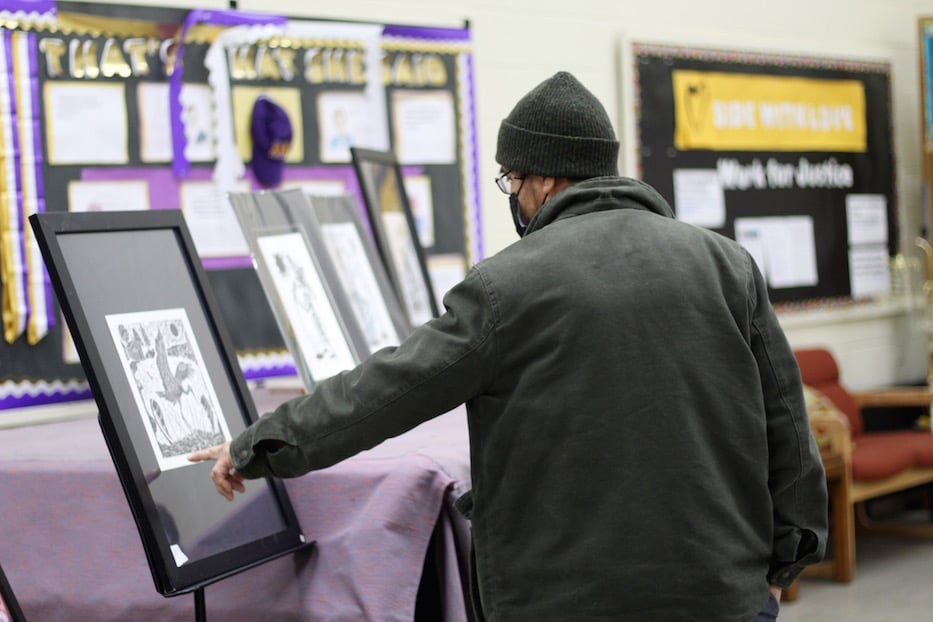
Mendoza at a Music Haven concert in late 2021. Lucy Gellman File Photo.
That was 17 years ago. Since then, Mendoza has not gone back to Mexico, he said. His first two sons continue to live in Mexico, maintaining little to no contact with him.
“When I left my family in Mexico my life was hard and miserable,” Mendoza said. “I still feel the pain, cause I haven’t seen one of my kids for 17 years. I am hoping to see him again someday.”
Mendoza holds onto hope that he will see his kids again someday. Meanwhile, he places the feelings of hurt and hope into his artwork, creating portraits of adults and children alike. Many have forlorn eyes, as if something is missing.
Raising A Family In Connecticut
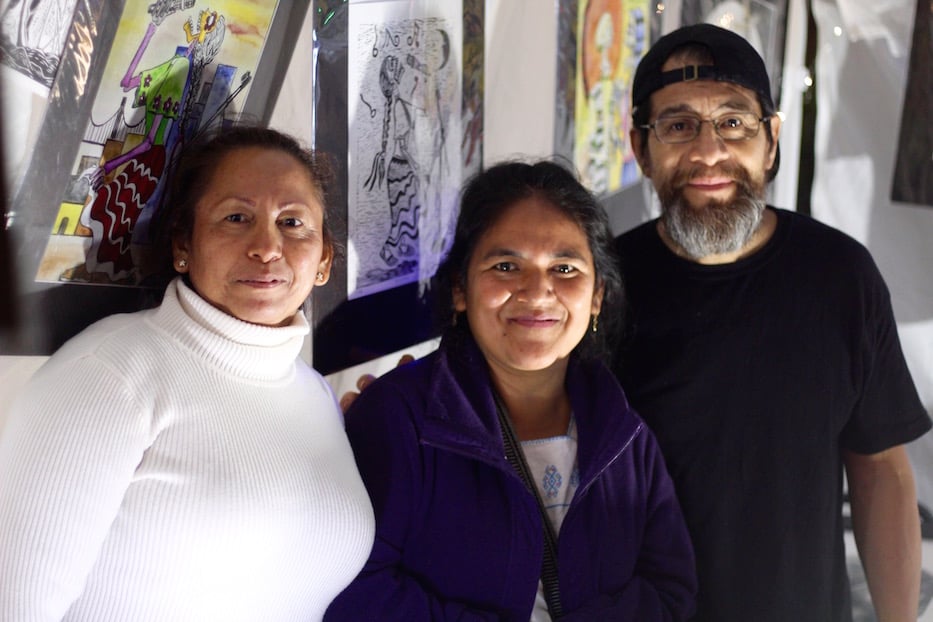
Valentina Lopez, María Luisa and Miguel Angel Mendoza Melchor at the New Haven Night Market in Fall 2021. Lucy Gellman File Photo
Mendoza found love again and married Luisa, who is from a different part of Oaxaca, several years ago. They have two sons, Cosijopii, 15 and Cosobi, 9. He also found his artistic footing—and that of his sons—in New Haven. The family moved to the city from Bridgeport in 2020 in pursuit of a free music program for Mendoza’s eldest son, Cosijopii.
They did not have access to free music schools in Bridgeport, Mendoza said. Two weeks after moving to New Haven, his son was enrolled in a program. Cosijopii is currently a sophomore at Wilbur Cross High School, is in the music program at Educational Center for the Arts (ECA), and participates in Music Haven. He plays the guitar, saxophone, violin, and clarinet.
“Living in New Haven allows my kids to feel free,” Mendoza said. “They can walk to the park if they want to. We did not have that in Bridgeport.”
Though the family initially moved to New Haven for educational opportunities for his eldest son, Mendoza has found support for his own artistic pursuits. He said he’s found a community that values and aids his artistic endeavors.
“When I first came to New Haven, I didn’t know anyone,” Mendoza recalled. “And one time when I was showing my artwork, a man saw my art and said, ‘You are a part of New Haven, and we’ve got to help you.’ A week in, I was welcomed by strangers. It’s a powerful feeling, to be in the right place.”
It wasn’t a new thing for Mendoza to take his art seriously. Mendoza found joy in art as early as age 7, but began saving and cherishing his work at age 25, said Mendoza. From the moment he moved to New Haven, his art was beginning to be taken seriously by people surrounding him.
Mendoza had no connections or family in New Haven before moving. Being welcomed and accepted so early on by strangers was a new feeling, he said.
“Making Art Connects People”
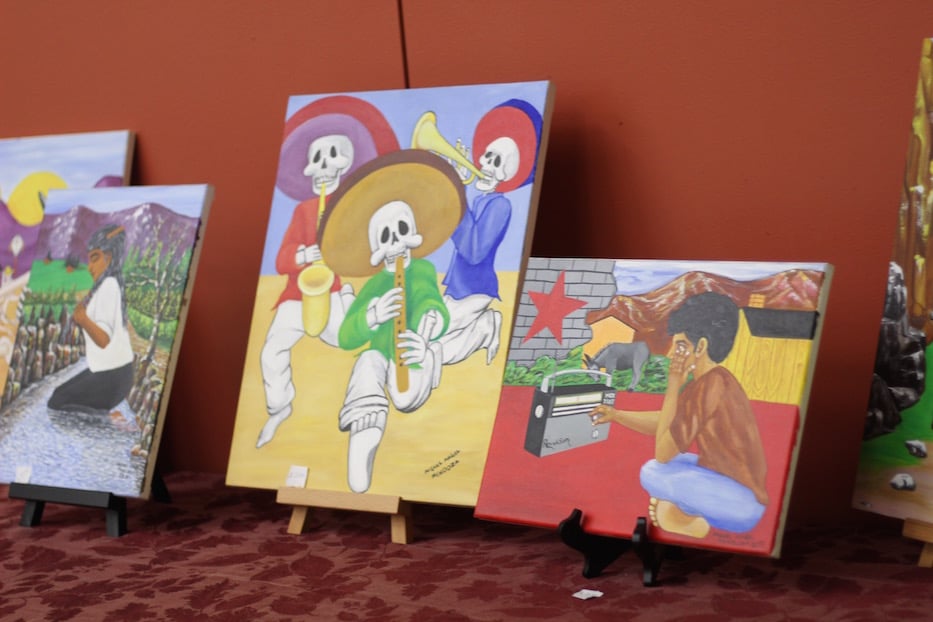
With this newfound support, Mendoza has been able to take his art to new heights by sharing his work online and through various venues throughout Connecticut. Demand for his work has been higher than it ever has before.
“Making art connects people,” he said. “It’s amazing and opens too many doors.”
Mendoza works with many mediums and paints with anything he can get his hands on. Using watercolors and oils to paint on canvas and sculpting are ways Mendoza brings his art to life.
He draws from many places for inspiration and support like his ancestry and all he’s been through to fuel his passion. Mendoza believes his wife, Luisa, is his greatest muse.
“I can tell my wife is part of my art,” Mendoza shared. “She does everything. It’s like we’re all a team. Luisa will be the one recording, taking pictures, and talking to people at my art shows and events. I have a lot of respect for her because what I do wouldn’t be possible without her.”
At the beginning of his success, Mendoza used his curiosity and drive to pursue art. By watching a video on the Internet, Mendoza was able to open a new door to artistry. By mixing a deep blue with a bright yellow, Mendoza was able to create colors and shades he couldn’t buy in a store. His curiosity didn’t stop there. Mendoza recently began taking art courses at the Paier College of Art in Bridgeport.
“At first I learned by myself,” Mendoza said. “I could watch a video, teach myself and learn it easily. Now I am learning a lot of different things and I am different as an artist.”
Today Mendoza continues to work on his latest painting, mixing colors to create unique shades of grey and white, and recalls the fundamentals of color theory he can attribute to his long nights spent in his university's art studio. Today he puts decades of faith into his true passions: art, family and his unique background that makes him the artist he is today.
Jayla Anderson is a sophomore at Cooperative Arts & Humanities High School. Her piece is part of our series "Welcome Home," in which alumni of the Arts Council's Youth Arts Journalism Program tell the story of immigrants and refugees in New Haven.

